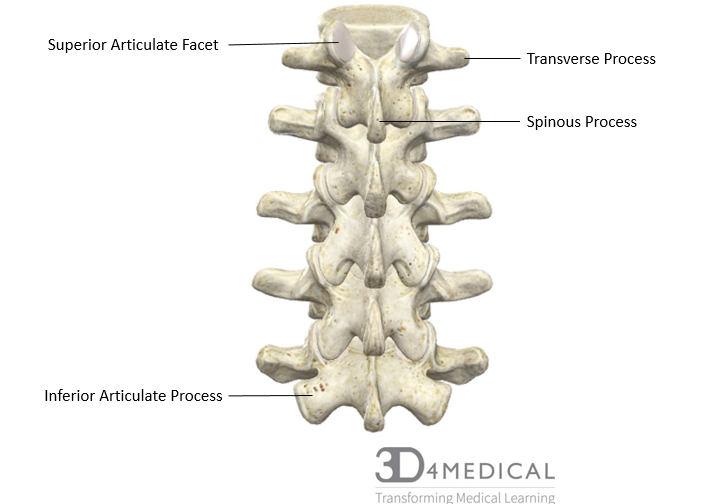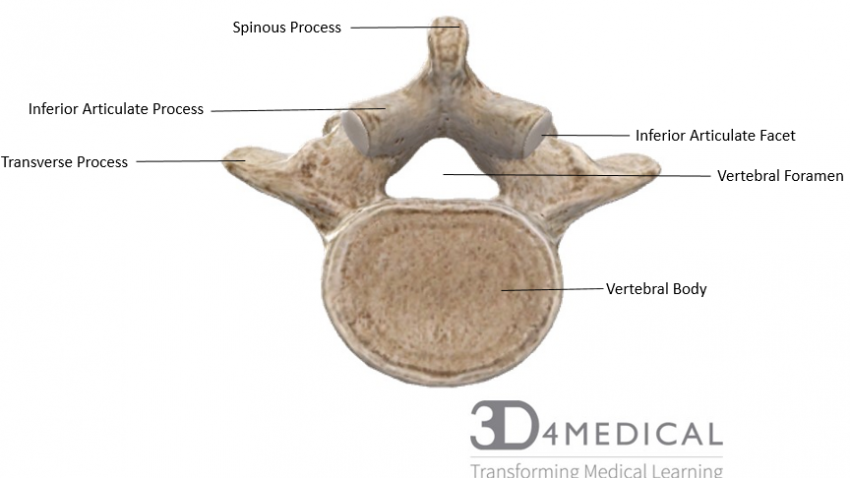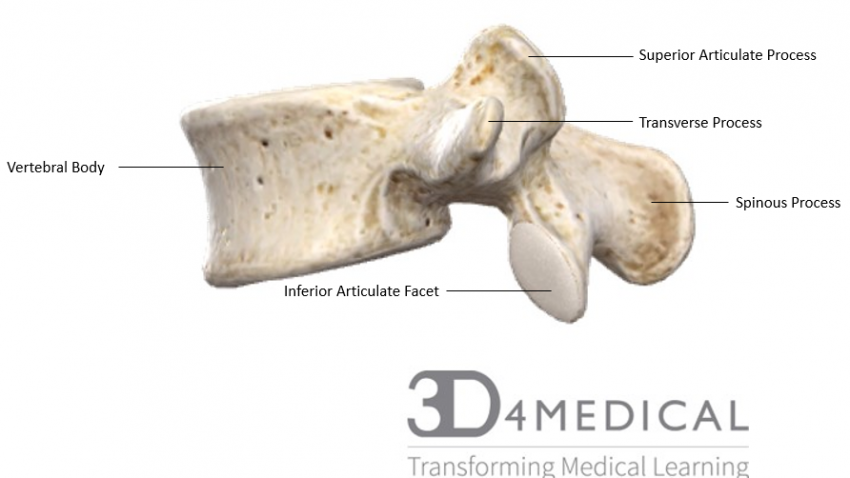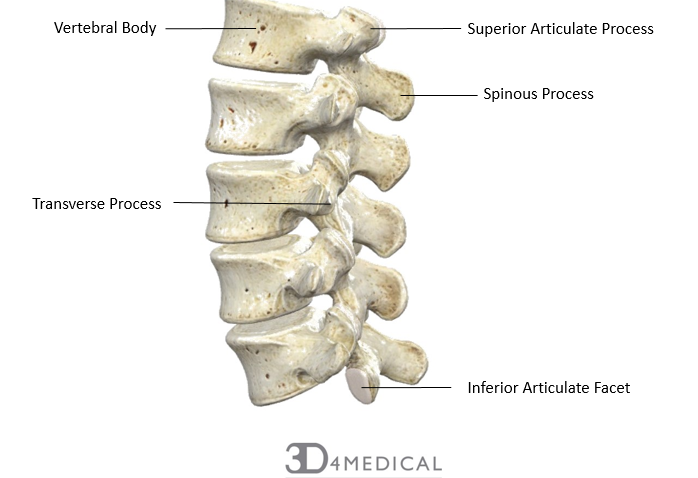Abdomen
Bones
POSTERIOR ABDOMEN: LUMBAR VERTEBRAE
The region of the lower back consists of 5 vertebrae (L1-L5). The curvature found in this region is a secondary curve, which is developed after birth. The curvature of the lumbar region develops as humans begin to apply weight by developing the ability to stand. The vertebrae within the lumbar region have a number of distinct features that differ from other regions. The vertebrae bodies are found on the anterior aspect of the vertebrae. They are oval shaped and are the largest of all regions, due to the weight bearing that occurs in the lower back. Each vertebrae articulates with the vertebrae found above and below. They are connected by ligaments and a fibrous cartilage called the intervertebral disc. Additional information can be found in the Joint, Ligaments and Connective Tissue section. Another distinct feature is the vertebral foramen are triangle shaped and are the smallest size out of the thoracic and cervical regions. Found on the posterior aspect of the vertebrae, the spinous processes are short, flat, hatchet-shaped and point directly posteriorly. They are the attachment point for a number of large back muscles. The spinous processes of the lumbar region can be felt through palpations of the skin. See section Surface Anatomy for additional information. Just like the other regions of the spine, the lumbar vertebrae have superior and inferior articular processes. Each superior and inferior articular process has a smooth surface on the end called an articular facet. The superior and inferior articulate facets face medially and laterally which provide stability by preventing the lumbar vertebra from rotating.





